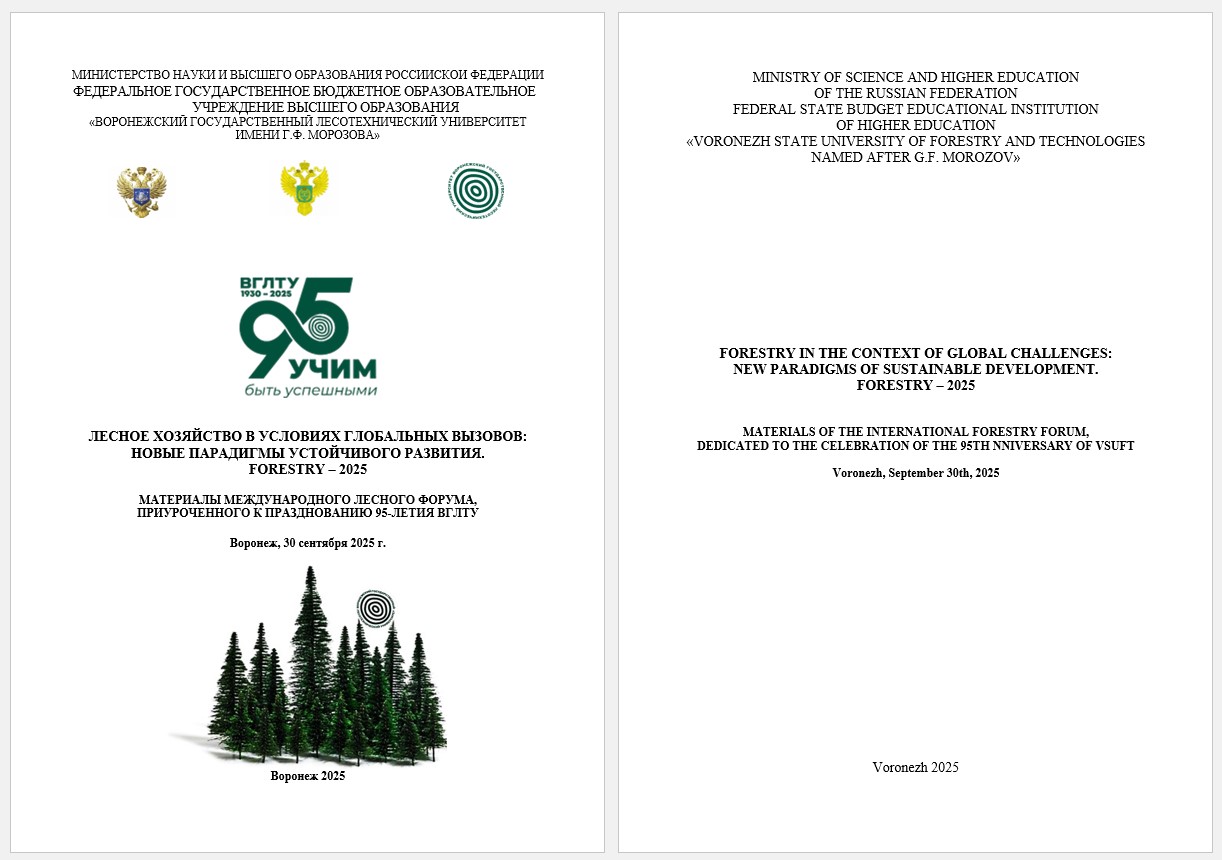Voronezh, Russian Federation
Russian Federation
Voronezh, Voronezh, Russian Federation
UDC 674.047.3
UDC 620
A study was conducted on the properties of plywood based on a urea-formaldehyde binder with the addition of multi-stage carbon nanotubes (MWCNTs). The key objective was to investigate the effect of f-MWCNT concentration on the physical, mechanical, thermal, and environmental characteristics of the resulting materials. A comprehensive analysis using TEM, Raman, and FTIR spectroscopy confirmed the successful introduction of carboxyl groups onto the nanotube surface. The strength properties (MOR and MOE) of the plywood reached their maximum at a content of 1.5% f-MWCNTs, increasing by 62.7% and 113%, respectively, compared to the control sample. Water resistance improved with increasing filler concentration, demonstrating the best result at 4% f-MWCNTs. The results of this study demonstrate the high efficiency of using functionalized MWCNTs to create plywood with an improved range of properties.
multi-walled carbon nanotubes, plywood, urea-formaldehyde resin, strength, heat resistance, formaldehyde emissions
1. Auriga R, Gumowska A, Szymanowski K, Wronka A, Robles E, Ocipka P, Kowaluk G. Performance properties of plywood composites reinforced with carbon fibers. Compos Struct. 2020;248:112533.
2. Ashori A, Ayrilmis N, Heydari V. Enhancing interfacial adhesion through coupling agent incorporation in plywood/ plastic waste composite materials. Int J Adhes Adhes. 2023;127:103513.
3. Auriga R, Gumowska A, Szymanowski K, Wronka A, Robles E, Ocipka P, Kowaluk G. Performance properties of plywood composites reinforced with carbon fibers. Compos Struct. 2020;248:112533.
4. Castanié B, Peignon A, Marc C, Eyma F, Cantarel A, Serra J, Curti R, Hadiji H, Denaud L, Girardon S, Marcon B. Wood and plywood as eco-materials for sustainable mobility: A review. Compos Struct. 2024;329:117790.
5. Chen S, Cheng C. Determination of gaseous formaldehyde by derivatization using magnetic multiwalled carbon nanotubes (MWCNTs) modified with 2,4-dinitrophenylhydrazine (DNPH) and high-performance liquid chromatography – ultraviolet detection (HPLC-UV). Instrum Sci Technol. 2022;50(2):174–89.
6. Ding Z, Ding Z, Liu J, Xie Y, Yang F. Derivative thermogravimetric analysis curve for characterizing the curing process of urea-formaldehyde resins. Int J Adhes Adhes. 2022;117:103184.
7. Dong C, Yang Y, Yuan C, Bai X, Guo Z. Effects of anisotropy of lignum vitae wood on its tribological performances. Compos B Eng. 2022;228:109426.
8. Karri R, Lappalainen R, Tomppo L, Yadav R. Bond quality of poplar plywood reinforced with hemp fibers and lignin-phenolic adhesives. Composites Part C: Open Access. 2022b;9:100299.
9. Golubewa LN, Kulahava TA, Leonik YuS, Shuba M V., Semenkova GN. Application of Raman Spectroscopy for Studying the Mechanisms of Neutrophil Activation by Carbon Nanotubes. J Appl Spectrosc. 2021;88(1):77–84.
10. Dorieh A, Selakjani PP, Shahavi MH, Pizzi A, Ghafari Movahed S, Farajollah Pour M, Aghaei R. Recent developments in the performance of micro/nanoparticle-modified urea-formaldehyde resins used as wood-based composite binders: A review. Int J Adhes Adhes. 2022;114:103106.
11. Mirski R, Dukarska D, Derkowski A, Czarnecki R, Dziurka D. By-products of sawmill industry as raw materials for manufacture of chip-sawdust boards. Journal of Building Engineering. 2020;32:101460.
12. Natarelli CVL, Lemos ACC, de Assis MR, Tonoli GHD, Trugilho PF, Marconcini JM, de Oliveira JE. Sulfonated Kraft lignin addition in urea–formaldehyde resin. J Therm Anal Calorim. 2019;137(5):1537–47.
13. Pramreiter M, Nenning T, Huber C, Müller U, Kromoser B, Mayencourt P, Konnerth J. A review of the resource efficiency and mechanical performance of commercial wood-based building materials. Sustainable Materials and Technologies. 2023;38:e00728.





